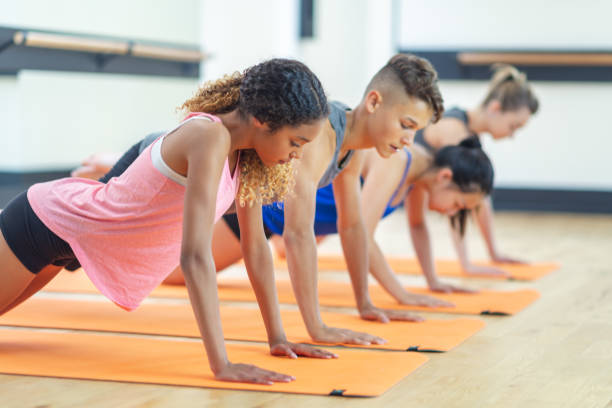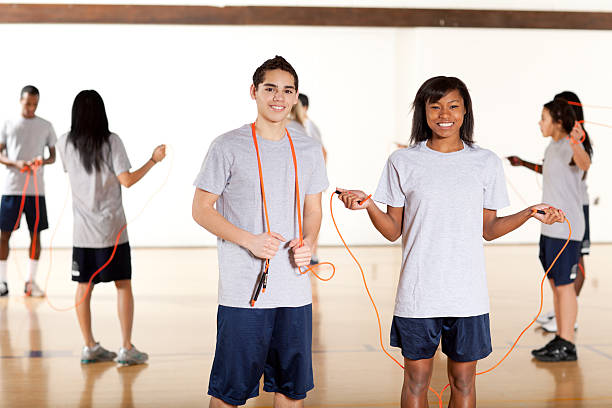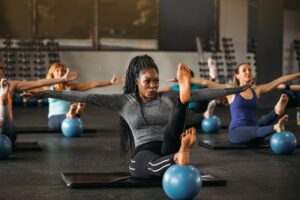Introduction
Being a student is no easy feat. With classes, homework, social obligations, and perhaps a part-time job, it often feels like there’s hardly any time left for exercise. Yet, staying physically active is crucial for maintaining both physical and mental health. Exercise can boost your energy levels, improve your mood, enhance your focus, and help you manage stress which is essential for a busy student. So, how can you fit exercise into your already packed schedule? Here’s a comprehensive guide to help you create an effective exercise routine that works for you.
1. Assessing Your Schedule

Identifying Available Time Slots
Start by taking a good look at your daily schedule. Map out your day, hour by hour, to identify any gaps between classes, after school, or even early in the morning. These are potential time slots where you can fit in a quick workout. Are there chunks of time between classes? Do you have breaks in the evening? Identifying these windows is the first step toward incorporating exercise into your routine.
Prioritizing Activities and Finding Gaps for Exercise
Consider your priorities. If exercise is important to you, find activities that can be shortened or done less frequently. This might mean watching less TV or cutting down on social media time. Evaluate how you spend your free time and make a conscious decision to allocate some of it to physical activity. Even 15-20 minutes can make a difference.
Utilizing Small Pockets of Time Effectively
Even short bursts of exercise can be beneficial. If you have a 10-minute break, use it for a quick workout instead of browsing your phone. Every bit of activity counts. Consider doing a series of bodyweight exercises, like squats, push-ups, or jumping jacks. These exercises can be done anywhere and don’t require any equipment. By consistently utilizing these small pockets of time, you can accumulate a significant amount of exercise throughout the week.
2. Setting Realistic Goals

Importance of Setting Achievable Fitness Goals
Set goals that are both challenging and attainable. Unrealistic goals can be discouraging, while achievable ones can motivate you to keep going. If you’re new to exercise, start with simple goals, such as exercising for 15 minutes a day, three times a week. As you progress, you can increase the duration and frequency of your workouts.
Differentiating Between Short-Term and Long-Term Goals
Create a mix of short-term and long-term goals. Short-term goals, like exercising three times a week, can provide immediate motivation. Long-term goals, like running a 5K or improving your strength, give you something to strive for over time. Break your long-term goals into smaller, manageable steps, and celebrate your achievements along the way.
Examples of Realistic Goals for Busy Students
A realistic goal for a busy student might be to fit in 30 minutes of exercise, three times a week. Other examples include aiming to walk a certain number of steps each day, completing a specific number of workouts per month, or trying a new type of exercise, such as yoga or Pilates, once a week. Tailor your goals to your interests and schedule to make them more achievable.
3. Choosing the Right Type of Exercise

Considering Personal Preferences and Fitness Levels
Choose activities you enjoy and that match your fitness level. This makes it more likely that you’ll stick with your routine. If you hate running, don’t force yourself to run—try dancing, swimming, or cycling instead. Consider your fitness level when selecting exercises. If you’re a beginner, start with low-impact activities and gradually increase the intensity as your fitness improves.
Balancing Cardio, Strength Training, and Flexibility Exercises
A well-rounded exercise routine includes cardio, strength training, and flexibility exercises. Cardio boosts your heart health, strength training builds muscle, and flexibility exercises keep you limber. Aim to include a variety of these exercises in your routine to target different muscle groups and improve overall fitness. For example, you might do a cardio workout on Monday, strength training on Wednesday, and a flexibility session on Friday.
Examples of Efficient Exercises for Limited Time
High-intensity interval training (HIIT) is great for busy schedules because it provides a full-body workout in a short time. HIIT involves alternating between short bursts of intense exercise and periods of rest or low-intensity exercise. Bodyweight exercises like push-ups, squats, and planks can be done anywhere and require no equipment. Yoga can be both calming and physically beneficial, helping to improve flexibility and reduce stress. Choose exercises that you can perform efficiently within your available time slots.
4. Creating a Flexible Exercise Plan
Importance of Flexibility in a Student’s Exercise Routine
Your schedule might change from week to week, so create a flexible plan that can adapt to your needs. This will help you stay consistent even when things get busy. If you miss a workout one day, don’t get discouraged—simply adjust your plan and fit it in another day. Flexibility is key to maintaining a sustainable exercise routine.
Sample Weekly Exercise Plans
A sample plan could be:
- Monday: 20-minute HIIT session in the morning before classes
- Wednesday: 30-minute yoga session in the evening to relax and stretch
- Friday: 25-minute strength training session using bodyweight exercises
- Saturday: 30-minute brisk walk or jog in the park
This plan provides a balanced mix of cardio, strength, and flexibility exercises while fitting into a busy schedule. Adjust the plan based on your preferences and time availability.
Adapting Your Routine to Changing Schedules and Priorities
Be prepared to adjust your routine as needed. If you have a big exam coming up, you might do shorter workouts that week but still make an effort to stay active. On less busy weeks, you can increase the intensity or duration of your workouts. By remaining adaptable, you can maintain a consistent exercise routine despite varying demands on your time.
5. Incorporating Exercise into Daily Activities

Tips for Integrating Physical Activity into Your Daily Routine
Look for ways to make everyday activities more active. Walk or bike to class instead of taking the bus. Take the stairs instead of the elevator. Stand or do simple exercises while waiting in line or during study breaks. These small changes can add up and make a significant impact on your overall activity level.
Benefits of Active Study Breaks
Taking short, active breaks while studying can help improve concentration and reduce stress. Try a few jumping jacks, a brisk walk, or some light stretching. Active breaks can refresh your mind and body, making your study sessions more productive.
Utilizing School Resources
Make use of school facilities like the gym, sports fields, or swimming pool. These resources are often free or discounted for students and provide a convenient way to stay active. Join sports teams or fitness classes to make exercise more social and enjoyable.
6. Staying Motivated and Consistent
Strategies for Maintaining Motivation
Track your progress to see how far you’ve come. Use a fitness app or journal to record your workouts, noting what you did and how you felt. Set reminders to work out, or find a workout buddy to keep you accountable. Mixing up your routine can also keep things interesting and prevent boredom.
Overcoming Common Barriers to Exercise
Identify barriers that might prevent you from exercising and find solutions. If you’re too tired after classes, try working out in the morning. If you’re short on time, do shorter but more intense workouts. If you’re unsure how to start, seek guidance from a fitness professional or use online resources.
Importance of Rest and Recovery
Don’t forget to rest. Your body needs time to recover, so make sure you’re getting enough sleep and taking rest days. Overtraining can lead to injuries and burnout, so listen to your body and give it the rest it needs to perform at its best.
7. Making the Most of Limited Time

Efficient Workout Strategies for Busy Students
Maximize your workout time with strategies like supersets (doing two exercises back-to-back without rest) and circuit training (moving quickly from one exercise to the next with little rest). These methods keep your heart rate up and make your workouts more efficient.
Importance of Quality Over Quantity
Focus on the quality of your workouts rather than the duration. A short, intense workout can be more effective than a longer, less focused one. Pay attention to your form and effort level to ensure you’re getting the most out of each exercise.
Maximizing the Effectiveness of Short Workouts
Make every minute count. Push yourself during short workouts to get the most benefit in the least amount of time. Incorporate compound exercises that work multiple muscle groups at once, such as squats, lunges, and push-ups, to maximize efficiency.
8. Utilizing Technology and Resources
Fitness Apps and Online Resources for Guided Workouts
There are many apps and online resources that offer guided workouts. These can provide structure and variety to your routine, making it easier to stay motivated. Examples include apps like MyFitnessPal, Nike Training Club, and YouTube channels with workout videos.
Leveraging Social Media and Online Communities
Join online fitness communities for support and motivation. Sharing your progress and seeing others’ successes can be very encouraging. Platforms like Instagram, Reddit, and Facebook have groups where you can connect with like-minded individuals and share tips and experiences.
Importance of Staying Informed About Proper Exercise Techniques
Educate yourself about proper exercise techniques to avoid injury and get the most out of your workouts. Many apps and websites offer tutorials and tips on how to perform exercises correctly. Consider seeking advice from a fitness professional if you’re unsure about your form.
9. Balancing Exercise with Academic Responsibilities

Time Management Tips for Balancing Exercise and Studies
Plan your week ahead of time, scheduling both study and exercise sessions. Stick to your schedule as much as possible to maintain a healthy balance.
Use a planner or digital calendar to keep track of your commitments and ensure you’re allocating time for both academics and physical activity.
Importance of Scheduling and Planning Ahead
Plan your workouts like you would any other important activity. This ensures you’re more likely to stick to them. Set specific times for exercise and treat them as non-negotiable appointments with yourself.
Examples of Successful Student Routines
Look for examples of other students who have successfully balanced exercise and academics. Their routines can provide inspiration and practical tips. For instance, some students might exercise in the morning to start their day with energy, while others might use their evenings to wind down with a workout.
Conclusion
Staying fit as a busy student is challenging but achievable. By assessing your schedule, setting realistic goals, choosing the right exercises, and staying flexible and motivated, you can create an effective exercise routine that fits your lifestyle. Remember, the key is consistency and making the most of the time you have. Start small, stay committed, and enjoy the journey towards a healthier, more active you. By integrating exercise into your daily routine, you’ll not only improve your physical health but also enhance your academic performance and overall well-being.




